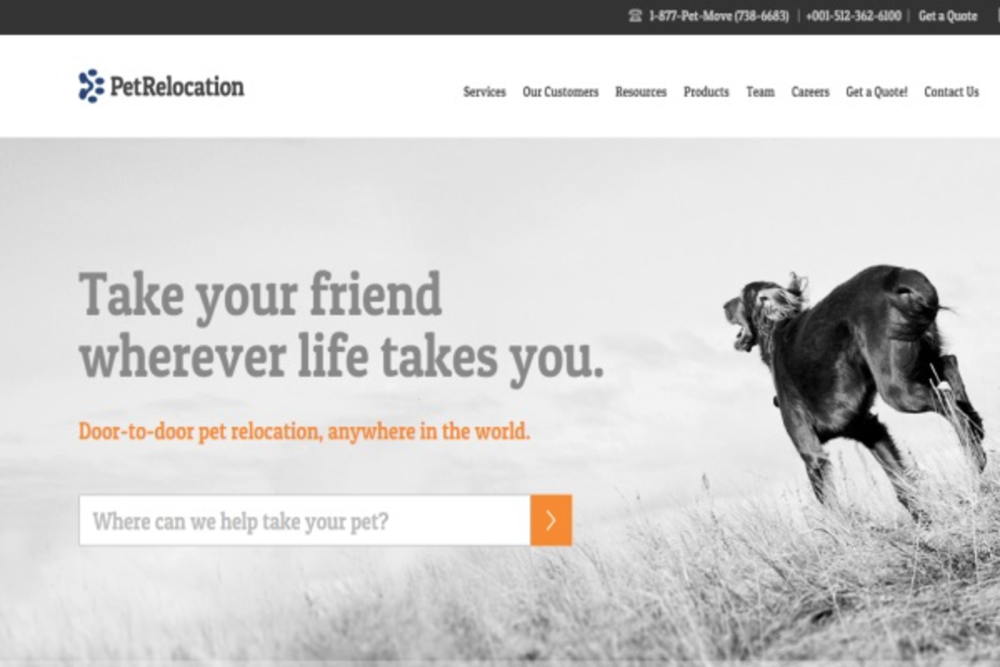Nowadays, pets are simply part of the family. So when there’s a major move or upcoming vacation, families today have to plan for their pets’ travels too. “Our customer is usually—and ultimately—a four-legged animal with an incredible journey ahead,” says Rachel Truair, chief of staff at PetRelocation, a pet moving and travel service. “And primarily, every four-legged animal has a pet parent who’s an animal lover and often in the middle of a very exciting, emotional time, such as moving for a job, for retirement, or perhaps going on a volunteer mission trip.”
Truair says that it’s at those emotional times that pet lovers want to plan for their animal’s comfort and for a smooth transition. But often, families simply don’t know the steps to take or the best options for their pets. “Our customers are passionate about their pets; they’re passionate about the journey they’re about to embark on. But sometimes, they’re a little overwhelmed—even, at times, fearful of this journey,” Truair says. “So that’s where we have the opportunity to kind of swoop in and teach them about what they don’t know and help answer their questions.”
It’s an opportunity, she says, not just to help families and their pets during major transition but to capitalize on a marketing opportunity for PetRelocation. Truair says through content marketing, she and her team have a chance to share their knowledge about pet travel—and as a result build trust with potential and current customers, establish PetRelocation as an authority, and perhaps most important, boost organic search and conversions. “Back in 2006, there was no authority in pet relocation. Not every company had a blog back then,” Truair explains. “So I saw that a blog could really work for us, even then.”
She says, however, that marketers at PetRelocation spent a lot of time answering questions from consumers through email—and many were the same questions asked several times over by different customers. On top of that, Truair says the company’s keyword and pay-per-click campaigns were generic—and expensive.
So with tools from Oracle Marketing Cloud, marketers at PetRelocation set up a content forum where pet lovers can submit questions into a queue and get answers directly from the marketing team. Some questions included queries like, “What’s the best airline for my bulldog?” or “What are the vaccination rules in the United Kingdom?” Marketers now cull and answer those questions directly on PetRelcoation.com, where anyone can see them and find them through search engines. That means better support for pet owners—and it translates into more leads for PetRelocation. In fact, Truair says that content marketing is now PetRelocation’s primary marketing strategy.
“Anyone can move their pets on their own,” she explains. “But through content marketing, we could either help them do it on their own or explain the benefits of letting us help them. It’s really the opportunity to show the value of our service.”
“Initially the goal was just to drive more traffic to our website,” Truair continues. “But quickly we started to drive that traffic, and as our traffic started to go up we started to get more and more leads from our website. We realized that we could dial back our pay-per-click spend. So, actually, we no longer spend any money on pay-per-click advertising.”
PetRelocation also uses the forum to collect testimonials from satisfied clients. Truair says these success stories have become some of the company’s most valuable pieces of their marketing plan. In fact, the company says that it’s seen a 150% increase in lead-to-customer conversion rates with these personal stories.
“Forty-seven percent of our leads now come from organic search traffic,” she explains. Truair says that PetRelocation is now engaging potential and existing customers in conversation that’s generated by them and, as a result, is simply more meaningful.
“It’s no coincidence that 70 percent of our annual revenue is directly tied to our online marketing efforts,” she says. “Content marketing really allows you to get beneath that marketing iceberg—beyond those general, top-of-iceberg questions. Ninety percent of the iceberg is actually underneath the surface. I really think content marketing is a great way to get to those beneath-the-surface types of needs.”








